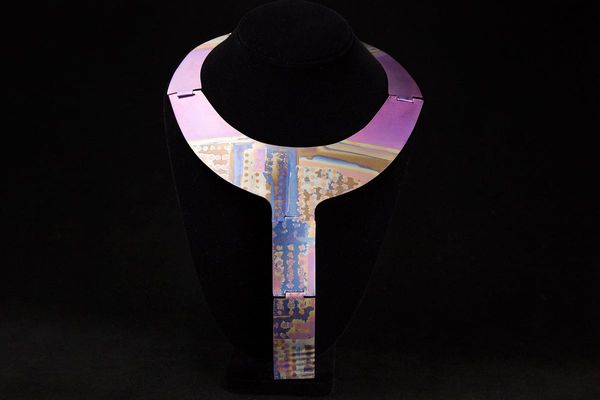
Until recently, I thought of butter chicken as a fairly uncontroversial pleasure. A dish of marinated tandoori chicken simmered in a smoky, butter-rich tomato gravy with spices such as garam masala, cardamom and fenugreek bringing it to life, it’s the perfect partner for naan or rice. But now India’s most famous curry is causing contention. Two Delhi restaurants, Moti Mahal and Daryaganj, are involved in a $240,000 lawsuit over which of them invented the dish. Each one claims that its founder originally created this now global emblem of Indian food, and it will be for the court to decide. But how much do butter chicken aficionados around the world really care?
Copyrighting food has always been a tricky business. Ingredients such as Parmigiano Reggiano, Prosciutto di Parma and champagne can have strict protected designation of origin (PDO) status in the EU and UK, but when it comes to claiming an entire dish, things get complicated. With one as complex as butter chicken, there’s no easy way to standardise how it’s made – and therefore trademark and take ownership of its recipe or invention. You might wonder why anybody would want to.
Granted, the dish is deeply ingrained in modern culture in India and the world over. Just listen to the Butter Chicken Song by the Canadian comedian Pushpek Sidhu to understand how the connection between food and feelings is experienced by young people of the south Asian diaspora. It’s not only butter chicken’s succulent meat and glossy, sharp, delicately sweet gravy that makes the dish a point of connection between Sidhu and his audience, but also its familiarity, its comfort and its cultural history. It’s the story of friends cementing their bonds with butter chicken and its vegetarian sister dish, dal makhani, during the turbulent partition of India. Finding solace and expression in the kitchen was perhaps one way of channelling the resilience of the Punjabi spirit into something hopeful during this devastating period. Awareness of the complex history of our food is not important for everyone, but for me, knowing the history of a dish is like seasoning it with salt.
Whenever I share recipes for Indian dishes online, they attract comments from people claiming they originated in their respective countries or states, and spark debates about their provenance and authenticity. But what we call “authentic” today often wasn’t yesterday. Those juicy tomatoes and chillies in butter chicken are a byproduct of Portuguese colonial rule, and came to India via the Americas. The kidney beans in north India’s beloved rajma-chawal (beans and rice) also come from the Americas. The bread buns or pav for Mumbai’s iconic street food, pav bhaji, were influenced by Portuguese bread (pão). Middle Eastern samosas, paired with pav, create the Indian street dish samosa pav (a bun with samosa and chutneys inside) – the wildest Portuguese, Middle Eastern and Indian mashup. The word naan comes from the Persian nân, simply meaning “bread”. This term was adopted and adapted by various communities across central Asia and the Indian subcontinent, eventually becoming synonymous with the specific type of tandoor-cooked Indian flatbread we know today. Coincidentally, it’s delicious with butter chicken.
As much as I treasure a slice of nostalgia, being preoccupied with the roots of a dish can impinge on the joy of innovation. To focus solely on origins sucks the fun out of novel inventions such as butter chicken pizza, a dish that’s recently gone global. In his latest cookbook, Veg-table, the food writer Nik Sharma shares a delectable recipe for dal makhani lasagne, a mashup of the other famous dish central to the Moti Mahal and Daryaganj case, and everyone’s favourite hearty Italian dinner. Velvety, butter-enriched black dal slathered and baked between layers of pasta sounds heavenly. I would never pass up the opportunity to try such an innovative dish for the sake of sticking with tradition.
Chicken tikka masala is a prime example of this migration of food concepts. For years, it was dubbed “Britain’s national dish”. It’s said to have been created in Glasgow in the 1970s by the Pakistani chef Ali Ahmed Aslam and the Shish Mahal restaurant after a customer allegedly asked him to make the pieces of tandoor-cooked chicken tikka less dry. But whether it was born in a bustling Glasgow curry house or a north Indian kitchen, chicken tikka masala’s journey shows how the food we eat today is part of a global cultural exchange. Mulligatawny soup and kedgeree also have roots in the Indian subcontinent and have assimilated seamlessly into British cuisine, thanks to the British invention of curry powder. This simple hack for adding flavour to meals was next embraced by Japan, when the Anglo-Indian British navy arrived during the Meiji era in the 19th century. Many of the foods we eat are born from displacement and have found their way on to tables across the globe. Their beauty lies in the way they continue to flex and adapt with us.
As a first-generation British-Indian with an east African family background, I’ve been raised in a culturally hybrid realm. In food, invention is the energy source that feeds and grows what we already know is delicious. The origin stories and evolution of our food both shapes and is shaped by our identities, and for me, that’s incredibly exciting. Indeed, the next time I sit down to eat my curry, with Sidhu’s “Baby, be my butter chicken” inevitably playing on loop in my head, I will take a moment to savour not only the taste but the story of resilience and innovation muddled into the buttery tomato gravy. Maybe a butter chicken shepherd’s pie might be on the cards.
Sanjana Modha is a digital content creator, specialising in Indian cuisine and recipes from her British Indian heritage and east African family background







